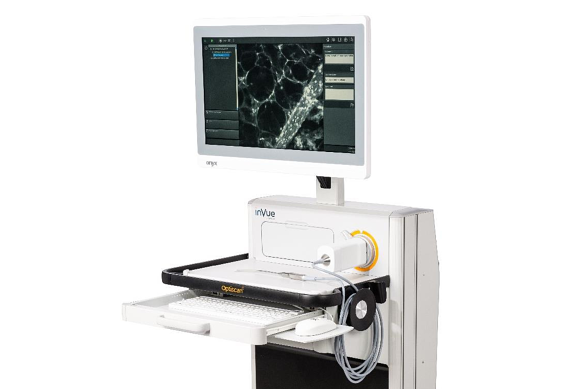
Optiscan Imaging has received the nod of approval from the Royal Melbourne Hospital to start taking real-time in-human images during surgery for breast cancer patients using its cutting-edge, microscopic “InVue” technology.
The vital “ethical clearance” for the recently-revealed device paves the way for an in-vivo study aimed at better diagnosing cancer cells in a trial that is expected to enrol 50 patients. In-vivo refers to a test or procedure in or on a living organism, such as a person, lab animal or a plant, and the company says it will provide a better assessment of cancer margins during surgery.

Optiscan Imaging’s cutting-edge “InVue” microscopic medical imaging device will be trialled on breast cancer patients.
The study is expected to assess Optiscan’s high-tech InVue surgical platform on patients presenting for lumpectomy procedures at a prestigious trio of hospitals that includes the Royal Melbourne, the Epworth in Richmond and Francis Perry House in Parkville.
A lumpectomy procedure removes only the cancerous tumour and a margin of the small rim of normal tissue sitting around it, with a view to leaving as much breast skin and tissue as possible in place. The InVue device will collect in-vivo imaging data of the surgical cavity during surgery and after tumour removal to determine the most effective clearance of the tumour while leaving a sufficient margin of tissue in place.
‘In this phase, collected images will guide surgeons in decision-making, determining tumour clearance or the need for additional tissue.’
Optiscan Imaging managing director and chief executive officer Dr Camile Farah
The study will use an intravenous (IV) fluorescein sodium as the contrast agent and will then assess the uptake of the contrast dye in both normal and cancerous breast tissues.
Management notes that recent analyses of breast cancer lumps imaged ex-vivo, meaning outside of the body, shows strong similarities between Optiscan’s imaging and histopathology, which is considered to be the gold-standard in the microscopic examination of tissues. The imaging provides similar features to that observed by pathologists from histopathology testing under microscopic viewing.
Optiscan Imaging managing director and chief executive officer Dr Camile Farah said: “The non-interventional study design will allow the research team the opportunity to gather imaging data without the procedure interfering with standard of care. Once this stage is completed, we anticipate progressing to further recruitment with an interventional protocol. In this phase, collected images will guide surgeons in decision-making, determining tumour clearance or the need for additional tissue related to microscopic spread, before patient discharge.”
The company’s InVue platform is a microscopic medical imaging device that delivers what could be termed an “optical biopsy”. It provides biopsy-free, slide-free imaging of live single cells in real time during surgery.









 Add Category
Add Category